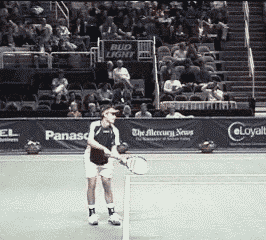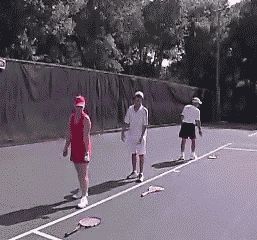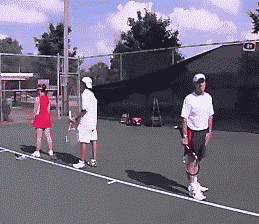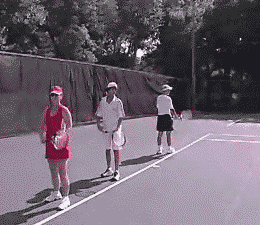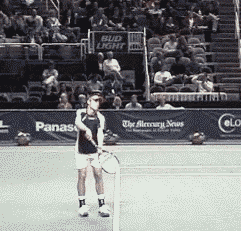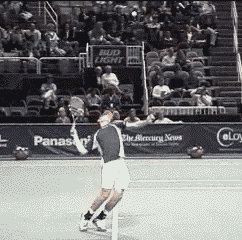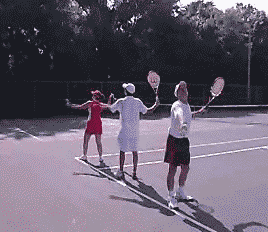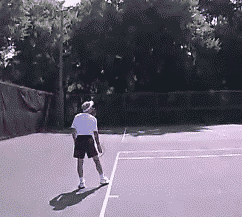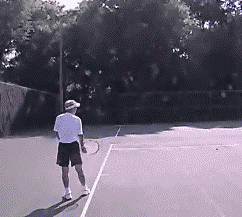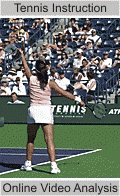|
TennisOne Lessons
Serve It Up by Heath Waters
In my last article “The Bionic Serve,” I detailed the fundamentals of how and why Andy Roddick achieves so much power on his serve. In this article, I will break down his serve into three easy to understand elements. I will then show you how to apply these fundamental principles through real life drills. As an experiment I took three students with levels ranging from beginner to advanced. The students participated in one 20 minute group lesson where they were introduced to the three principles. I took “before” and “after” videos so you can judge the results for yourself. The players used in this article are one female over 50-beginner level, one male adult over 60- national level, and one male junior- ranked top 20 in the United States boy's 14's division. It really doesn't matter whether you are a complete beginner or a current tour professional, you will see proof through these three test subjects, that if you practice and apply these fundamental principles to your serve, you will improve your power and control within minutes. So let's get started so you can observe for yourself how fast and easy it is to add power to your own serve. The Ball Toss The first fundamental we will discuss is the ball toss. This is probably the single most important element in the serve. It ensures consistency and initiates whether we will have more or less service power. Without a consistent toss (in the same location each and every time) it is almost impossible to execute the serve on a consistent basis.
Watch any of the great servers and you will notice they have mastered tossing the ball equi-height and equi-distant from the body almost each and every toss. The ball is almost without exception tossed in the exact same location on every serve. So how does this lead to power? If we master a consistent toss out in front of our body at the same spot each and every time then we will be able to add more power to our serve. The key phrase here is “out in front of our body.” If we toss the ball out in front and into the court then we have no other choice but to transfer our weight into the ball and that increases our mass (body weight) into impact which in turn increases power. So observe Roddick's toss (above) and then practice the toss drill over and over till we can land the ball consistently on the racquet strings as demonstrated by our test subjects.
Proper Use of the Legs The second key fundamental to master is the proper use of the legs. All to often the lower level player under utilizes their legs, as was the case with the beginner subject in this experiment. She used no legs at all during her service motion. The key is to get the racquet and legs working in unison. Let's look at a simple drill the test group did that will immediately get you using your legs and racquet in a nice synchronized rhythm.
Start without a racquet (above left), bending the legs and arms together into the position you see here with the arms and knees bending together in unison. Stand up and try it right now beside the computer. Next, add the racquet and bend the arms and legs together but notice the arm ends in an “L” shape position at it's final resting point. Freeze in your final position and see if your racquet is in the “L” position and your legs fully bent.
Practice this drill until you feel you have good coordination between the racquet take back and the legs going into their final bend at the exact same time. It is all one motion together in unison as you see the test subjects demonstrating. Learning to use the legs properly will enhance your serve power immediately as well as take stress off the arm and shoulder preventing injuries and lengthening your playing career. The Wrist Snap Now that we have the arms and legs working together properly we will move on to our final element the wrist snap. Whether you master the leg and arm coordination or not, despite your service technique, the one thing that can instantaneously transform your serve is the proper wrist snap. I am always amazed at how quickly this one concept can improve and enhance any player's serve. It is not that we do not naturally use our wrist to some extent when we strike the serve, it is that we typically do not focus enough of our mental effort upon the snap and form of the snap during each and every serve that we attempt.
Once this is focused upon the lights will go off like fireworks. I guarantee it. For each and every serve you must make a conscious effort to snap the wrist like a whip and vigorously seek the proper form ending as we will demonstrate. So let's look at what I am talking about with Roddick's serve and then let's watch the test group do a drill that you can do yourself. Notice Roddick's cocked wrist in the hammer position (visual on left) before contact and then the final position of the elbow up while the racquet is pointing to the ground. Think of the St Louis ARCH as a visual. However as soon as you achieve this position let your racquet naturally follow through so as to prevent injury. Your focus should be on snapping your wrist through the ball to the ending finish of “elbow up and racquet head down” as you see Roddick and the test group demonstrating below. At first you may want to briefly hold this position, however, after you have mastered the basic form of “elbow up in an arched position and racquet head down” then let the racquet finish wherever it wants to without trying to stop it
Take care when practicing this technique because if it done incorrectly it can lead to possible stress on the shoulder. However, when done correctly as shown in the video clips you can revolutionize your service power in a matter of minutes! So now that we have discussed the three fundamentals that will immediately increase your serve power, shown Roddick utilizing these elements, and had the test group demonstrate the drills necessary to master these fundamentals, it is time to see if they really work. We will now take a look at the before and after video clips of all three test subjects and see if they improved any of the three fundamentals; the toss, use of the legs, and, most importantly, the wrist snap. Although the differences might look minor at full speed motion, when viewed in slow motion with high-speed video, the once subtle differences become clearly recognizable and the improvement is seen immediately. 60-year-old male player
14-year-old top 20 nationally ranked junior
50-year-old female beginner (our most improved test subject)
Conclusion Well there you have it. We have neatly broken down the fundamental principles of how to achieve more power on the serve. I have demonstrated three easy applications to practice and apply these principles using the drills demonstrated by our test group. Using Roddick as example you were shown the exact fundamentals that the drills reinforced. The test group then demonstrated the specific drills that create the muscle memory for achieving these fundamentals. We then finally showed you the before and after results of the test group. The second video was shot just 20 minutes after they had received instruction. The test group was ecstatic about their results and if you go practice and focus on these three same service fundamentals I guarantee you will be in love with the new power serve you too will acquire. It is as simple or complicated as you make it but remember that the more simple something is the less things can go wrong with it. So go work on these three applications and let me know if your serve gains the power you were always looking for but just didn't know where to find it. Your comments are welcome. Let us know what you think about Heath Waters' article by emailing us here at TennisOne.
This invaluable visual comparison, combined with the detailed analysis by a current tour professional coach, offers the most advanced and unique learning environment in tennis. Pro Tech will store your video lessons for two years on your own web page, so you and your coach can evaluate your progress from anywhere in the world. TennisOne members receive a 10% discount. |

